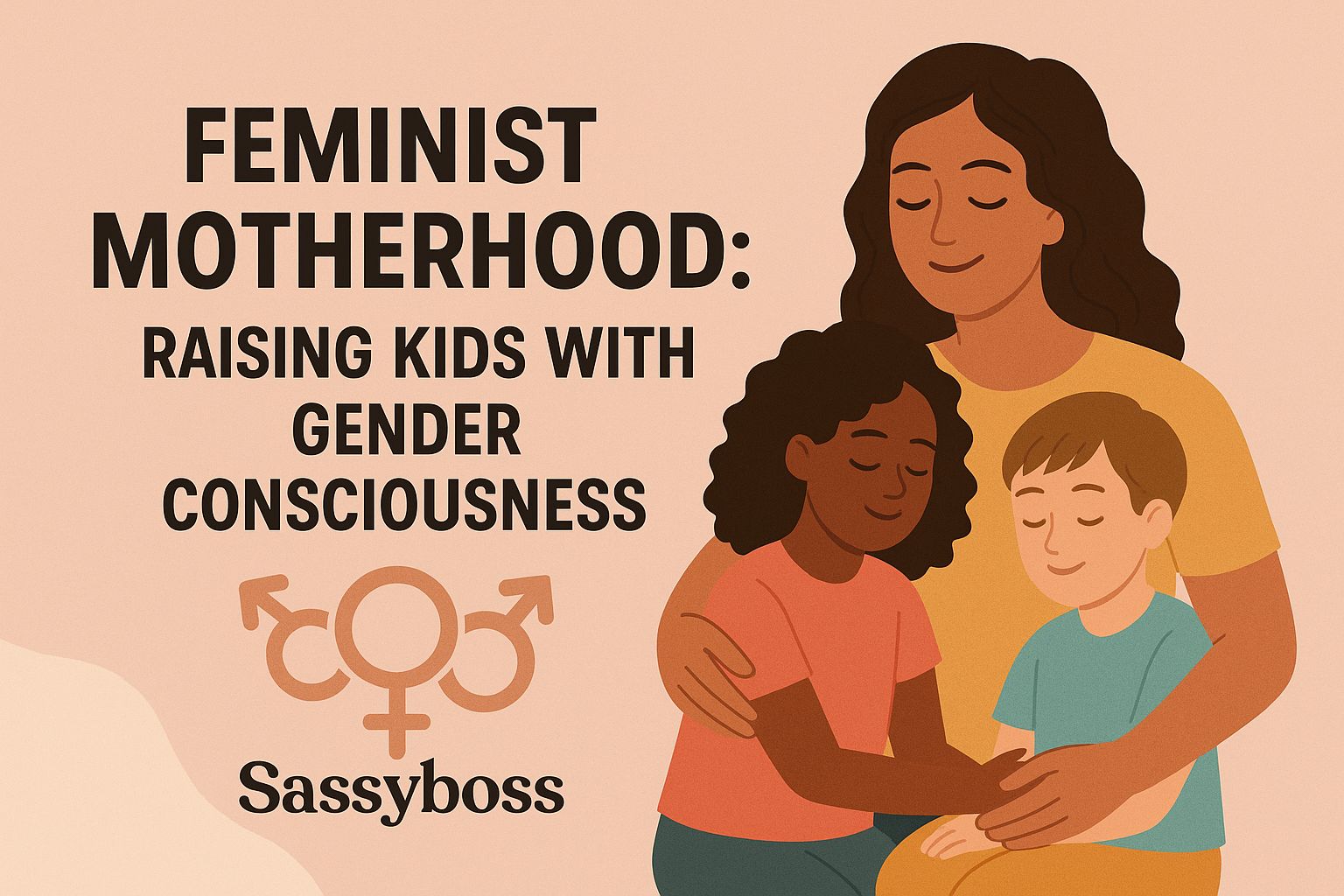Feminist Motherhood: Raising Kids with Gender Consciousness
In a world that is evolving faster than ever, parenting has become a deeply intentional act. Today, more mothers are embracing feminist values not only as a personal philosophy but as a parenting strategy. Feminist motherhood is not about raising “perfectly woke” children—it’s about cultivating awareness, empathy, equality, and critical thinking. It’s about raising humans who understand gender not as a rigid box but as a spectrum—and who treat all people with respect and dignity, regardless of where they fall on that spectrum.
So, what does it mean to practice feminist motherhood in 2025? And how do we raise kids with a strong sense of gender consciousness in a world that still clings to outdated norms?
Let’s explore.
1. Understanding Feminist Motherhood
Feminist motherhood starts with the belief that women—and all genders—deserve equal rights, opportunities, and autonomy. But it also recognizes the unique challenges mothers face: the emotional labor, the pressure to conform to patriarchal expectations, and the often-invisible work of caregiving.
A feminist mother questions traditional roles, challenges stereotypes, and raises her children with the awareness that these roles and stereotypes exist—and that they are not set in stone.
It’s not about indoctrination. It’s about empowerment.

2. Teaching Kids to Question Gender Norms
From the moment a child is born, gendered messages bombard them: pink or blue? Dolls or trucks? Sweet or strong?
Feminist parenting disrupts this binary thinking. It begins by allowing children the freedom to explore interests, emotions, and behaviors without assigning them a gender value.
• Books and media matter. Introduce them to stories with diverse characters, strong female leads, and non-binary heroes. Let them see that girls can be astronauts and boys can be caregivers—and that both can cry, lead, play, and create.
• Normalize diversity. Use inclusive language and correct others gently when they reinforce outdated roles. When your child hears “girls can’t be engineers,” respond: “Actually, girls can be anything—and so can boys.”
• Model curiosity. If your child asks, “Why is pink a girl’s color?” respond with: “That’s a great question. Do you think colors belong to anyone?”
Encouraging critical thinking over blind acceptance is one of the most powerful feminist tools you can offer your child.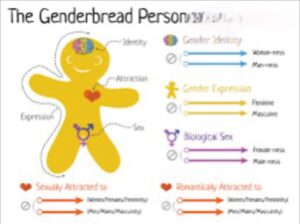
3. Emotional Intelligence is a Feminist Issue
Emotional suppression, especially among boys, is one of patriarchy’s most damaging legacies. Feminist motherhood involves creating safe spaces where kids of all genders can express a full range of emotions—without shame.
Teach them that:
• Crying is not a weakness.
• Empathy is not “girly.”
• Anger is okay—but how you express it matters.
• Being vulnerable is powerful.
Emotional intelligence builds not only healthier individuals but a more compassionate society. When boys are taught it’s okay to feel, and girls are taught their anger is valid, we dismantle the emotional double standards that fuel inequality.
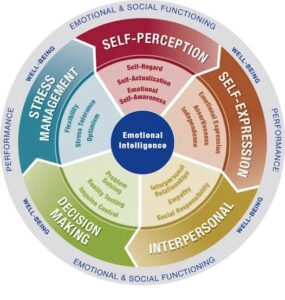
4. Rethinking Chores, Roles & Responsibilities
Gender consciousness starts at home. A powerful way to model feminist values is through the everyday division of labor and responsibilities.
Avoid defaulting to traditional roles:
• Don’t assume the girl should clean and the boy should take out the trash.
• Rotate chores regardless of gender.
• Show that caregiving (like helping younger siblings, caring for pets, or preparing food) is a shared responsibility.
Children learn by watching, not just listening. If they see parents sharing duties equally, they’ll internalize equity as the norm.

5. Media Literacy and Unpacking Bias
We live in a media-saturated world. Cartoons, advertisements, social media, and influencers are shaping your child’s worldview constantly.
Help them become media literate:
• Watch TV or videos together and ask critical questions like: “Why are all the superheroes boys?” or “What message do you think this ad is sending?”
• Encourage skepticism. Teach them that just because something is popular doesn’t mean it’s right.
• Highlight positive examples of diversity and inclusion in media.
This practice not only builds awareness but also encourages your child to think for themselves.
6. Inclusive Language and Pronouns
Using inclusive language is a simple but powerful way to normalize gender diversity. As kids grow, they’ll encounter friends, classmates, or family members with different gender identities.
As a feminist mother, you can:
• Use terms like “they” when gender is unknown.
• Normalize asking and respecting pronouns.
• Explain that some people don’t feel like “just a boy” or “just a girl,” and that’s okay.
This fosters empathy and inclusivity—and reduces the stigma for kids who may later question their own identity.
7. Letting Children Define Themselves
One of the core tenets of feminism is bodily autonomy—the right to define your identity and make choices for yourself.
Respect your child’s preferences, whether it’s how they dress, what toys they like, or who they feel close to. Let them know:
• Their body is theirs.
• Their choices matter.
• They are loved for who they are—not who society says they should be.
This autonomy builds confidence and resilience, and it teaches them to extend that same respect to others.
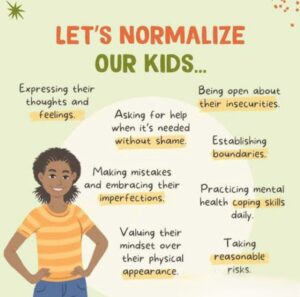
8. Navigating Challenges and Pushback
Raising kids with gender consciousness isn’t always easy. You might face judgment from family members, pushback from schools, or even confusion from your child.
In these moments:
• Stay calm and clear in your values.
• Use questions to open dialogue instead of arguments.
• Surround your child with affirming communities—online or offline—where feminist and inclusive values are celebrated.
Feminist motherhood isn’t about perfection. It’s about persistence, reflection, and progress.
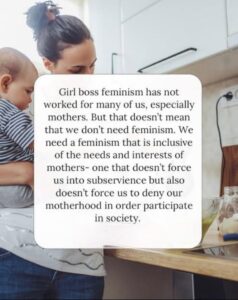
9. Raising Boys vs Girls vs Non-Binary Kids
Every child is different. Feminist motherhood isn’t about flipping the gender script—it’s about tearing it up entirely and letting each child write their own.
• Raising girls: Empower them to speak up, take space, and value their intellect over their appearance.
• Raising boys: Encourage sensitivity, empathy, and respect for boundaries and consent.
• Raising non-binary or gender-nonconforming kids: Celebrate their authenticity, protect their right to self-define, and advocate fiercely for their inclusion and safety.
The goal isn’t sameness—it’s fairness.
10. Feminism as an Ongoing Conversation
Feminist motherhood is not a checklist; it’s a continuous, evolving dialogue. As your child grows, so will their understanding of gender, justice, and identity. Keep the conversation open, honest, and age-appropriate.
Be willing to learn with them. Admit when you don’t know something. Celebrate growth—both yours and theirs.

Final Thoughts
Feminist motherhood is a radical act of love—not just for your children, but for the world they will inherit. By raising kids with gender consciousness, you are challenging centuries of inequality and laying the foundation for a more compassionate, inclusive future.
It doesn’t mean getting everything right. It means trying, every day, to raise children who question unfairness, embrace difference, and live with empathy.
Because the world doesn’t just need more feminists—it needs more humans who believe in justice, equality, and kindness.
And it starts at home.
